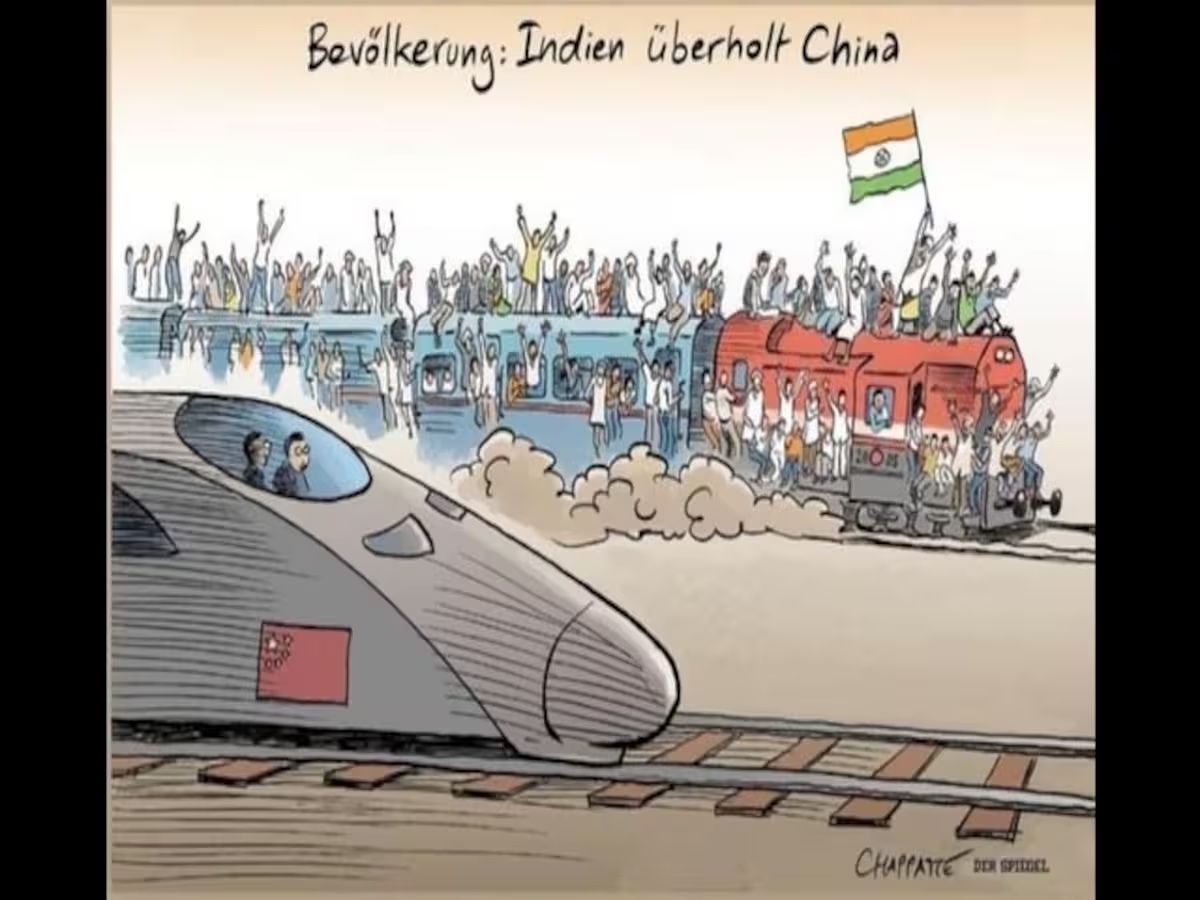‘We are not amused’, India says of Der Spiegel’s cartoon on world’s most populous nation
Justified? Or a humour bypass, one of the perils of pomposity?
In 2000, a cartoon in The Times of India, one of India’s largest newspapers, showed a woman holding a letter. She explained: “I am just examining the stamp! The way the postal delays are becoming I shouldn’t be surprised if it is that of King George V!”
The cartoon is faintly topical because of the forthcoming coronation of another British monarch, Charles III, but also, for another reason. A cartoon in a foreign paper is on the minds of Indian officialdom and not because of its sparkling humour. In fact, Indians are taking a grim view of Der Spiegel’s portrayal of India’s huge population now that the United Nations Population Fund (UNFPA) has confirmed India is the world’s most populous country.
India, UNFPA recently said, has more than 1.428bn people or about 3mn more than China. Another UN body, the Department of Economic and Social Affairs, added that India probably overtook China some time this month.
Along came the Der Spiegel cartoon. It showed Indians cheering and waving a flag aboard a packed, antiquated train that is overtaking a Chinese bullet train with just two people inside.
Indians started to denounce the portrayal as racist and offensive, with IT minister of state Rajeev Chandrasekhar dryly offering the following comment on Twitter: “Dear Cartoonist at @derspiegel Notwithstanding your attempt at mocking India, it’s not smart to bet against India under PM Narendra Modi… In a few years, India’s economy will be bigger than Germany’s”.
Did the cartoon mock India? As the late Abu Abraham, one of India’s cartooning greats once put it, “Sarcasm, irony, humour, wit – all these are essential ingredients of cartoons”. So yes, the Der Spiegel cartoon depicted a packed Indian train, with a dash of wit. That’s the point of a cartoon, isn’t it?
But what about the other complaint, that the cartoon was “racist”? As with anything, opinion is mixed. Ashok Swain, Professor of Peace and Conflict Research at Sweden’s Uppsala University, has tweeted that it isn’t because it compares two Asian countries rather than contrasting India with Europe. Another Twitter-user took an even more relaxed view: “I think the Indian train depicts the fun, chaotic and crowded way of life in India. Better than robotic efficiency any day.”
Some Indians aren’t buying that. Should they?
The point about the ill-humour over the cartoon is that some Indians see the international interest in their demographic bulge as somehow insulting. The international responses, they feel, feed into stereotypes about a poor, overpopulated country, rather than one that is thrusting, self-confident, on the move and destined for superpower status.
The sad thing is that Indian prickliness appears to be at a level it would even find Laxman’s cartoons offensive. For more than 50 years from 1947, when India gained independence, Laxman’s cartoons appeared everyday in The Times of India. They offered a satirical, witty, ironic and humorous commentary on myriad aspects of Indian life, not least corruption, red-tapeism, the exhausting and sometimes hypocritical dance of democracy and our netas (politicians), as well as all the things that didn’t work for the common man – taps that run dry, the soaring price of vegetables, and yes, postal delays.
Once, we were able to laugh at ourselves. (Click here to read my chapter on Indian grimness in the 2016 book Making Sense of Modi’s India.)
Also read:


